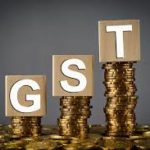Moving quickly to plug loopholes, the Income Tax Department has asked banks to report all cash deposits exceeding Rs 2.5 lakh during the 50-day window provided to tender the now-defunct 500 and 1000 rupee notes.
http://taxxcel.com/

Previously, banks were required to report to the I-T Department only when cash deposits in an account exceeded Rs 10 lakh in one full year.
But in view of apprehensions that large number of illegal or black money may sought to be converted into white during the window provided till December 30, the Revenue Department has issued fresh set of instructions, a top official said.
“The attempt will be not to harass honest citizens who are free to tender all of their legal, old high-denomination currency savings in their bank accounts and get new ones,” he said.
But the window provided to them will also be not allowed to be misused, he said, adding that the Income Tax Department is keeping a close eye on all high-value deposits.
Those depositing large amounts of unaccounted money will have to face the consequences under tax laws, which provide for a 30 per cent tax, 12 per cent interest and a 200 per cent penalty.
Earlier in the day, the Finance Ministry came out with newspaper advertisements assuring people that their hard earned money is safe and that depositing junked Rs 500/1,000 notes of up to Rs 2.50 lakh in bank accounts will not be reported to the tax department.
It also cautioned people against depositing the money of unknown people in their own accounts or falling prey to cheats, thugs and rumour mongers.
Besides, the ministry said, farm income continues to remain tax free and can be easily deposited in bank.
Small businessmen, housewives, artisans, workers can also deposit cash in their accounts without any apprehensions, it added.
“Deposits up to Rs 2.50 lakh will not be reported to the Income Tax department. There will be no harassment or investigation. All honest citizen need not worry. Farmers’ income is tax free and can be easily deposited in bank,” the ministry said in newspaper ads.
In its biggest crackdown ever on black money, the government on Tuesday night announced demonetisation of Rs 500 and Rs 1,000 notes and asked people holding such notes to deposit them in their bank accounts.
Since yesterday, people have been thronging banks amid concerns over exchanging and depositing the scrapped high denomination currency.
People can deposit defunct Rs 500/1,000 notes in their accounts till December 30, 2016, without any limit.
Restrictions have been imposed on withdrawal limit and people can withdraw up to Rs 10,000 per day or Rs 20,000 per week. This limit will be reviewed after few days.
Besides, old notes worth up to Rs 4,000 can be exchanged at any bank or post office till November 24, 2016, by showing photo ID proof.
ATMs can be used to withdraw up to Rs 2,000 a day per card till November 18 and Rs 4,000 from November 19 onwards. This limit too will be reviewed subsequently.
The ministry also advised people to make payments using cheques, demand drafts, debit or credit cards and electronic fund transfers and there is no restriction on such transactions.
for more detail- contact 9827334250








